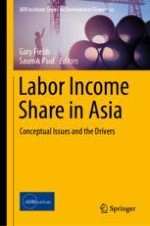2019 | OriginalPaper | Buchkapitel
8. What Explains the Increase in the Labor Income Share in Malaysia?
verfasst von : Allen Ng, Theng Theng Tan, Zhai Gen Tan
Erschienen in: Labor Income Share in Asia
Verlag: Springer Singapore
Aktivieren Sie unsere intelligente Suche, um passende Fachinhalte oder Patente zu finden.
Wählen Sie Textabschnitte aus um mit Künstlicher Intelligenz passenden Patente zu finden. powered by
Markieren Sie Textabschnitte, um KI-gestützt weitere passende Inhalte zu finden. powered by
